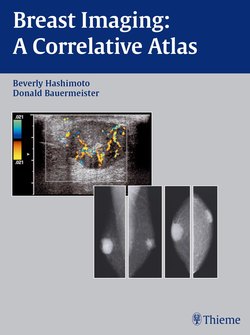Читать книгу Breast Imaging - Beverly Hashimoto - Страница 21
На сайте Литреса книга снята с продажи.
ОглавлениеCase 7
Case History
A 54-year-old woman is status post replacement of a left breast implant and now has a new mass on her screening mammogram.
Physical Examination
• normal exam
Mammogram
Mass (Fig. 7–1)
• margin: circumscribed.
• shape: oval
• density: fat-containing
Figure 7–1. Deep to the nipple in the posterior third of the left breast is a well-defined oval mass that contains a round lucent mass. (A). Left MLO mammogram. (B). Lefi CC mammogram.
Ultrasound
Frequency
• 7.5 MHz
Mass
• margin: well defined
• echogenicity: heterogeneous
• retrotumoral acoustic appearance: enhanced acoustic transmission
• shape: ellipsoid (Fig. 7–2)
Figure 7–2. Left transverse breast sonogram: The mass identified in Figure 7–1 corresponds to an anechoic fluid-filled cyst that contains a round heterogeneous mass, which represents the lucent mammographic mass. In real time this heterogeneous mass moves with changes in patient position and floats to the top of the fluid.
Pathology
• oil cyst
Management
• BI-RADS Assessment Category 2, benign finding
Pearls and Pitfalls
1. The mammographic mass corresponds to an oil cyst that is floating within a water density cyst. The oil cyst represents fat necrosis that resulted from removal of the previous implant.
2. Sonographically, oil cysts are generally round or oval, hypoechoic, isoechoic, heterogeneous, or less commonly hyperechoic compared with fat. When the oil cyst is not calcified, sound transmission is generally increased or unchanged. As in this case, the identity of the oil cyst is clarified by the mammogram.
Suggested Readings
1. Heywang-Kobrunner SH, Schreer I, Dershaw DD. Post-traumatic, post-surgical and post-therapeutic changes. In: Heywang-Kobrunner SH, Schreer I, Dershaw DD. Diagnostic Breast Imaging. New York: Thieme; 1997:280–316.
